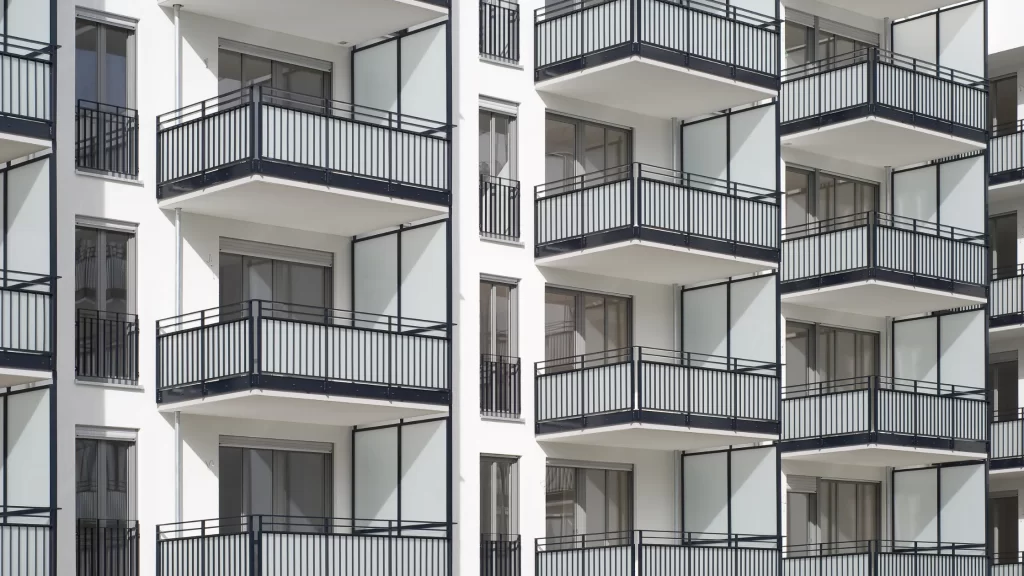
On 11 December 2024, the High Court handed down its decision Pafburn Pty Limited v The Owners – Strata Plan No 84674 [2024] HCA 49.
For a summary of the background facts and the arguments put forth by each party, you can read our previous article here linked:
Update on the Pafburn Saga – from the High Court
The High Court had to decide whether Madarina (the developer) and Pafburn (the head contractor) (together, the Appellants), can “rely on the failure of another person (such as a subcontractor) to take reasonable care in carrying out construction work, or otherwise performing any function in relation to that work, to limit their liability under Pt 4 of the Civil Liability Act 2002 (NSW) (“the CLA“) to an amount reflecting the proportion of the loss that a court considers just having regard to the extent of the responsibility of each for the damage or loss” (at [1], [emphasis added]).
The decision was split 4:3. In short, the majority (being four out of seven Justices) found that Madarina and Pafburn wholly owe the duty of care pursuant to section 37 of the Design and Building Practitioners Act 2020 (NSW) (DBPA) (s. 37 DOC), and that the duty is not delegable to the subcontractors or certifiers engaged by Pafburn and/or Madarina. In other words, the developer and the head contractor cannot avoid, limit or reduce liability by delegating work to others.
On the other hand, the minority (three out of seven Justices), in part, agreed with Pafburn and Madardina.
This article summarises both the majority and minority decisions of the High Court.
The Court had to decipher how section 37, 39 and 41 of the DBPA, and sections 5Q and 39 of the CLA worked together (amongst other provisions).
Those sections are summarised below:
DBPA
Section 37 of the DBPA sets out the s. 37 DOC, namely, the duty to take reasonable care to avoid economic loss caused by defects . This duty is owed by persons who carry out construction work.
Section 39 of the DBPA states that the s. 37 DOC is non-delegable. In other words, a person who carries out construction work cannot delegate the s. 37 DOC to another person.
Section 41 of the DBPA provides that Part 6 of the DBPA (which includes the above mentioned sections) is subject to the CLA.
CLA
Section 5Q of the CLA states that if a person owes a non-delegable duty, then that person is vicariously liable to others it engaged to complete the works.
It should be noted however that the use of the term ‘non-delegable’ in section 5Q of the CLA is a reference to the concept’s common law meaning, being “a type of duty of care which, if owed by a person, means that the person cannot exclude or limit their liability for conduct within the scope of the duty of care causing reasonably foreseeable harm merely by the person exercising reasonable care in arranging for another person to perform the function to which the non-delegable duty of care attaches” (see [20]). This is different to the statutory meaning provided in s. 39 of the DBPA.
Finally, section 39 of the CLA provides that, where a person is vicariously liable to another, then they are liable for the other person’s portion of liability.
Our previous article goes into further depth as to each party’s position; however, those positions can be summarised as follows.
The Appellants
The Appellants argued that the s. 37 DOC is owed by each person that “carries out construction work” and as such is an apportionable claim pursuant to section 34 CLA. The concurrent wrongdoers are the other people that carried out the construction work, such as a waterproofer, plumbers and electricians. As such, the Appellants argued that their liability should be reduced by the liability owed by the subcontractors and certifiers who also carried out the alleged defective construction works which led to the alleged loss.
The Owners
The Owners argued that Madarina and Pafburn each owe the s. 37 DOC, that section 39 DBPA makes the duty non-delegable, and the combination of section 5Q CLA and 39 DBPA means the Appellants are vicariously liable for the subcontractors and the certifiers they engaged.
The majority held that:
1. the s. 37 DOC when read with section 39 of the DBPA imposes a non-delegable duty;
2. section 5Q of the CLA applies to non-delegable duties, and as such a person can be vicariously liable for the negligence of those to whom the work was delegated;
3. the proportionate liability scheme under Part 4 of the CLA does not apply to the duty imposed by section 37 of the DBPA; and
4. the appellants (builder and developer) cannot limit their liability by apportioning to other ‘concurrent wrongdoers’ (e.g., subcontractors) because are wholly liable for the economic loss caused by construction defects and vicariously liable to the persons they engaged.
5. the appellants (builder and developer) can still pursue cross-claims against others (subcontractors) for breach of any applicable duty owed to them, to the extent that they are they are found liable to the Owners.
At [52], the majority (Gageler CJ, and Gleeson, Jagot and Beech-Jones JJ stated that:
“[…] the scope of the s 37(1) duty extends to all defects in or related to that building arising from all construction work in relation to the building whether or not the person in fact performed any of the physical acts comprising that construction work. In the case of a person who “supervises etc” work in para (a), (b) or (c) of the definition of “construction work” for part of the building (such as the foundations), the scope of the s 37(1) duty extends to all defects in or related to that part of the building (i.e., the foundations) arising from all such construction work.[Emphasis added]”
In other words, the following makes the Appellants liable to owe the s. 37 DOC (see [56]):
“(a) Madarina (as developer) “delegated or otherwise entrusted to” Pafburn the construction of the Building and, in so doing, “supervised etc” the whole of that construction work; and
(b) Pafburn (as head building contractor) constructed the whole of the Building and, in so doing, delegated or otherwise entrusted many kinds of construction work to others.
Neither Madarina nor Pafburn, however, could discharge, exclude, or limit their s 37(1) duty by delegating or otherwise entrusting their “construction work” to another competent person [such as a subcontractor]. On that basis, the liability of each of Madarina and Pafburn is “as if the liability were the vicarious liability of” them for the whole of the construction work in relation to the Building.”
As such, the majority ruled that neither Appellant could delegate or entrust their ‘construction work’ to another person and as such are vicariously liable (per s. 5Q of the CLA) for the subcontractors and certifiers they engaged to actually carry out the construction work. Therefore, the Appellants cannot apportion any of their liability to the subcontractors or certifiers.
The decision concluded by noting that the Owners now must prove that the Appellants caused the economic loss claimed.
Minority judgement
Notably, three out of the four Justices of the High Court dissented and found in favour of the developer and builder.
Gordon, Edelman and Steward JJ forming the minority, on the other hand ruled in favour of the Appellants (minority judgment).
In summary, the minority judgement found that the s. 37 DOC is apportionable considering at least the following:
1. When interpreting legislation, one must begin with the text of the legislation/provision itself, as opposed to “any assumption about the desired reach or operation of the relevant provisions” (see [71]).
2. Weight was to be placed on the wording of s. 37 of the DBPA, and in doing so, the minority pointed out that there are two aspects to the s. 37 DOC, namely that:
a) S. 37 creates a “statutory duty to take reasonable care to avoid economic loss caused by defects” and is imposed on “a person who carries out construction work”. The minority went on further to opine that “given the different ‘construction work’ each person ‘carries out’, the scope of the duty owed by each person is different”; and
b) The s. 37 DOC is owed to subsequent owners. The minority found this part was included to clarify that the duty is owed to an end user (an uncertainty that lies with the common law negligence claim).
Section 39 of the DBPA does not turn the s. 37 DOC into the common law ‘non-delegable’ duty (as defined at the beginning of this article), but rather it simply ensures that a person who owes the s. 37 DOC cannot escape liability by assigning the part of the work they completed to someone else (see [81]).
In coming to its decision, the minority noted that, head contractors engage subcontractors to complete works in which the head contractors themselves are not experienced, or in work which they are not equipped to do, and as such it would seem to be unreasonable to make a head contractor strictly liable for work it did not, and could not complete (see [81] and [87] to [88]).
The minority also found that s. 5Q of the CLA does not apply to the s. 37 DOC, reasoning that (see [90] and [91]):
a) The s. 37 DOC imposes a duty to exercise reasonable care to avoid economic loss caused by defects which cannot be delegated;
b) S. 5Q of the CLA is concerned with a non-delegable duty of strict liability to ensure reasonable care is taken;
c) The s. 37 DOC is not one of strict liability;
d) The s. 5Q provision is concerned with the common law non-delegable duties;
e) A “non-delegable duty is not a duty of care” but the s. 37 DOC expressly states that it is a duty of care; and
f) Further, a ‘non-delegable duty’ is owed by the employer alone, whereas the s. 37 DOC is owed by all workers carrying out construction work.
The effect of this decision is that, in circumstances where an owner of a property sues a builder for defects, the builder will be wholly liable for the cost of the defects, and unable to blame others (such as its subcontractors) in the first instance to reduce the liability owed to the owner.
However, a builder may sue the subcontractors responsible for the defective works, by way of a cross-claim, to recoup the moneys it paid to the owner.
If you would like more information on the above or need any assistance, please contact us on 02 8329 6500 or excellence@kreisson.com.au
This communication is sent by Kreisson Legal Pty Limited (ACN 113 986 824). This communication has been prepared for the general information of clients and professional associates of Kreisson Legal. You should not rely on the contents. It is not legal advice and should not be regarded as a substitute for legal advice. The contents may contain copyright.

Associate | 02 8239 6509